The seven ways below are a great way to start on the path to a self sustaining homestead.
While some of these ideas do require that you live in the county and are able to have livestock, you can start learning many of these skills even if you live in an apartment.
For example, try volunteering at a small homestead near where you live, or grow some food on your apartment balcony or even inside your apartment.
Buying food at a farmers market or gleaning food from a local farmer is a great way to get a large quantity of food to start practicing your food preservation skills.
Think outside the box if you do not already live on a homestead and get started on the path to a self sustaining homestead today using the suggestions below.
The Basics Of A Self Sufficient Homestead
There are some basic things you need to know if you are going to live the homestead lifestyle.
The first thing you need to realize is the goal is to become self-reliant.
That means you can provide and care for yourself and your family with what you can grow or make yourself.
While it is true many homesteaders do have jobs outside of their homestead - not all do - and the final goal is to eliminate the need for that job.
Raise Or Glean Food To Create A Sustainable Homestead
There are some skills involved with homesteading, but it is not difficult to learn the skills and they are ones most of our ancestors had.
Food is an essential.
Raising livestock, growing a garden or planting fruit are all ways to go about meeting this need.
However fruit trees can take 3 to 5 years before they begin to produce.
This requires planning and some creative thinking on your part to find an alternative method of getting fruit.
One option is to ask around.
Many people grow fruit trees but do not harvest the crops and gladly let someone else.
This is a great way to get free fruit until your trees begin to produce.
Planting a garden - and learning which vegetables do well in cold weather or are perennial - is a great option.
Be sure to use non-GMO, heirloom open-pollinated seeds so you can save some from year to year.
It is a good idea to plant more than you think you need.
This allows for some crop failure, gives you plenty to eat during the growing season - or to share with others - and still leaves some food for winter storage.
Another option is to set up a growing area indoors.
Many vegetables and herbs, including medicinal herbs, thrive in windows or under grow lights.
This is a great option for those who live in apartments or rental properties, not to mention it is so easy to learn how to preserve herbs when you use the tips from Homestead Wishing on their post 6 Ways To Preserve Herbs.
If you are looking for more ideas for growing your own food, I encourage you to check out these Rural And Urban Gardening Ideas For Homsteaders.
For those interested in meat production, check out this article from Timber Creek Farm on Providing Meat For Our Family.
Here are some other related posts:
- How To Glean Potatoes - As For Me And My Homestead
- How To Eat Healthy On $5 A Day - Pink Fortitude, LLC
Adequate Storage For Food And Supplies
Speaking of winter storage - you are going to need a a cool, dark and dry area that is free of pests to store your bounty.
Some homesteaders have a root cellar, others can, freeze or dehydrate their food.
Whatever method you intend to use is fine, but know what your plan is before the crops start coming in because you need supplies - canning jars and equipment, dehydrators, freezers, etc.
Finding room to store the supplies you need plus enough food to last for 6 months to a year might be an issue - especially if you live in an apartment or tiny house.
That is when getting creative and finding unused areas in your existing home is necessary.
Check out these 10 home food storage solutions that will inspire you for some great ideas.
You also need a place to keep those seeds you saved from your garden.
A simple plastic shoe box is a great storage option for seeds.
Place the seeds in small plastic baggies such as those sold at craft supply stores, label them and put them in the plastic shoe box.
Put the lid on the plastic shoe box and place it in your refrigerator.
This saves time, keeps the seeds cool and you know where they are when you are ready to plant.
To learn more about seed starting and saving, be sure to check out my book the Complete Idiot's Guide To Seed Saving And Starting.
Here are some additional food storage ideas:
- Food Storage: Apples - Survival Finds
Raising Livestock
Consider raising livestock.
I suggest you do your research before getting any animals.
Know what you need, have their stalls or chicken coop ready as well as any fencing, feeders, milk stands or other supplies you need.
Raising livestock organically is the best way to go but it does cost more and organic feed is often harder to find.
Some homesteaders grow their own feed.
If you have enough land, this is a great option.
Popular homestead animals include chickens or other types of poultry, rabbits, goats, pigs and some have cows or horses.
Smaller farms, such as the 2 ½ acres I live on do better with smaller animals such as poultry, rabbits, sheep, pigs and goats.
It is possible to raise a horse or cow on smaller acreage but be prepared for the extra cost of hay.
For more information on raising chickens at home, check out The Ultimate Guide To Keeping Chickens At Home.
Here are some more great tips for raising livestock, especially if you are new to it.
- Step By Step Guide To Building A Cow Milking Stanchion - The Flip Flop Barnyard
- Building A Goat Milking Stand - The Flip Flop Barnyard
- How To Milk A Cow By Hand (or a Goat) - The Flip Flop Barnyard
- 6 Simple Steps To Prepare For Raising Goats - The Flip Flop Barnyard
- Raising Miniature Goats, Cows, Chicken And Sheep - Timber Creek Farm
- Sheep Care On Small Farms And Homesteads - Timber Creek Farm
- Breeding Sheep - What You Need To Know - Timber Creek Farm
- The Ultimate Guide To Nigerian Dwarf Goats - MRAnimal Farm
- 5 Reasons To Choose Nigerian Dwarf Goats For Milk - Better Hens And Gardens Of Bramblestone Farm
- Choosing Nigerian Dwarf Goats - Better Hens And Gardens Of Bramblestone Farm
- Goat Starter List - Better Hens And Gardens Of Bramblestone Farm
Start A Bee Hive
Some homesteaders raise honeybees.
Honey has many uses and is a great sugar substitute.
The bees pollinate the crops that you grow so you get a better harvest.
Before making the decision - and going to the expense - of getting into bee keeping make sure there are no rules against it where you live.
I highly encourage you to raise the bees organically.
Find other local bee keepers so if you have questions or problems arise there is someone to turn to.
There is a great post on Homestead H0w-To about How To Get Started With Beekeeping that I encourage you to check out to learn more.
Here are some other great posts related to raising bees:
- How To Start Honey Bee Hives (or How To Hive Package Honey Bees) - Better Hens And Gardens Of Bramblestone Farm
- 7 Beginning Beekeeping Important Questions - Better Hens And Gardens Of Bramblestone Farm
- The UnBeeLievable Bee House That Hubby Built - Pink Fortitude, LLC
Clean Water Is An Essential Part Of Your Self Sufficient Homestead Plan
Every homestead needs a clean water supply and a backup water supply.
You can't survive without access to clean water and buying it is expensive.
One option is to set up rain barrels for water that your livestock can drink out of.
Use some of the collected rainwater to irrigate your garden.
The fastest way to collect rainwater is to set a barrel up beneath a downspout but be sure there are no potential chemical issues with the roofing on your buildings before you do this.
You should have a way to purify water as well as a way that you can store the water you collect.
If you bring the water to your homestead site from a creek or pond, then you'll need a way to transport it.
There are so many ways to save water so you have it when you need it.
If you would like to know more, check out this post from Homestead Wishing about why you need a Backup Water Supply and how to store it.
Here are some other relevant posts:
- How's That Bottled Tap Water Working For Ya? - Pink Fortitude, LLC
You Need A Weapon On A Homestead
Homesteaders also need a way to protect themselves and their livestock.
Most homesteaders keep weapons on hand in order to protect themselves in the event of an unforeseen problem.
It is a good idea to be armed with knives as well as guns.
Both of these are great for protection not to mention handy to have around for hunting or food preparation.
Another option is to have a bow for those times when you want to hunt but you can't use a gun due to regulations.
Homeschooling
Education for children is a necessity.
You want to make sure you have educational supplies on hand if you plan to homeschool.
You can find educational supplies at homeschool stores and should stock up in advance.
You can also order homeschooling supplies online.
Whatever method you choose, you want to make sure it is reliable, proven and is going to educate your children properly.
This is why when it comes to homeschooling, my favorite resource to share with you is Dollie Freeman's site The Charlotte Mason Way.
I really encourage you to check her site out.
Of course, there are many practical ways to educate your children as well.
Teaching things like math can be done using real life concepts such how to measure items in a recipe or how to measure wood for cutting when building something.
Studies have shown that children who are educated using real life concepts often excel in life.
This is what so many people homeschool their children.
Final Thoughts About The Path To A Self Sustaining Homestead
Do not feel you must master everything at once to be successful.
Take it one step at a time.
Learning to preserve food takes time and patience.
I have had plenty of seals fail on my canning jars.
While it bothers me to throw the food away, I know it is contaminated and not safe to eat - not even for livestock.
Instead of beating myself up over it, I try to figure out what went wrong so it doesn't happen again.
When it comes to raising livestock, expect a few animals to get sick or die.
Instead of running to the vet like I did when I first started raising livestock I used each vet visit to learn what the problem was and how to solve it on my own.
Yes, I still have a vet - just in case - but I am far more competent now than I was 12 years ago.
The path to a self sustaining homestead is do-able by anyone who wants to commit and put the effort needed into the task, even if you have to start your journey to self reliant living inside city limits.
Here are a few other resources you might like:
- A Beginner's Guide To A Self Sufficient Homestead Plan
- 33 Old Fashion Traditional Skills That Are Easy To Learn + Save Money - Piwakawaka Valley
Do you have questions or need encouragement on your journey?
I invite you to leave your comments below.
Self-Sufficient Living
Explore the ultimate guide to self-sufficient living with our curated list of related blog posts. From food preservation to DIY projects and homesteading inspiration, find everything you need to thrive on your self-sufficiency journey. Perfect for beginners and seasoned homesteaders alike!
The Essential Guide To A Completely Self Sufficient Homestead
Learn how to start living on a completely self sufficient homestead today with this essential guide plus sign up for our FREE eCourse!
How To Be Self-Sufficient In An Apartment
Learn how to be self-sufficient in an apartment. Even if you live in a big city you can learn skills you will use one day on your homestead.
Thriving Through Self-Sufficiency: A Journey to a Balanced Life
Learn how to thrive through self-sufficiency: slow down, live intentionally, and find balance for a healthier and more sustainable lifestyle.
Top 5 Tips for Balancing the Self-Sufficient Lifestyle: Stay Organized, Motivated, and Successful
Discover how to balance the self-sufficient lifestyle with actionable tips for organization, motivation, and sustainable success.
Step-by-Step Guide to Self-Sufficient Living: One Small Step at a Time
Start small with this step-by-step guide to self-sufficient living. Simple, achievable tips to ease into a sustainable lifestyle.
A Beginner's Guide To A Self Sufficient Homestead Plan
Making a self sufficient homestead plan is the first step to accomplishing your goal of living on a self sufficient homestead.
Seasonal Foraging Guide for Homesteaders: Year-Round Wild Edibles
Enhance your homesteading skills with our comprehensive seasonal foraging guide. Learn how to find and enjoy nature's delicious offerings.
Living The Homestead Lifestyle
Embarking on the homestead lifestyle is not easy. This is why I love Homegrown and Handmade by Deborah Niemann. The homestead tips are great!
Weapons To Include In Your Homesteading Self Sufficiency Survival Kit
Learn what weapons - both lethal and non-lethal - to include in your homesteading self sufficiency survival kit. Also learn why you need to include them.
Mockmill Flour Grinding Mill Makes It Easy To Grind Your Own Grain
The Mockmill flour grinding mill quickly and easily turns wheat berries into flour that is perfect for making freshly baked bread.
Homesteading Today In The USA
Although the Homestead Act of 1862 is no longer in effect, free land is still available for those wanting to try their hand at homesteading today.
How Much Land For A Homestead
When it comes down to the reality of how much land for a homestead you really need, it's much more than just a number. Learn what you need to consider.
What Homestead Living Is Really Like
Learn what homesteading living is really like. It's not always picturesque or romantic. In fact, sometimes it is difficult.
Food Security Preparedness - What To Do Before Disaster Strikes
Learn what food security preparedness skills you need to survive any natural or man-made disaster, and why you should grow your own food.
Learn To Be Self-Sufficient
Learn to be self-sufficient from Sheri Ann Richerson, a modern day self-sufficient woman with these eBooks and printables!
Self Sustainable Living Ideas Using Animals
Animals are a great way to help you acheive your self sustainable living ideas. Learn what animals are best for your self sufficiency plan.
Preserving Herbs For Winter Use eCourse
Do you love fresh herbs but wonder if there is an easy way to preserve them for the winter?
Do you seek other ways to use herbs other than just as a seasoning on food?
There are so many ways to preserve herbs for winter use – from various methods of drying them to freezing them, but it doesn’t end there.
Some of the best ways to preserve herbs in right in the foods you would normally incorporate herbs into – pre-made seasonings, teas, butter or oil.
Then this is the course for you!
What You Will Learn In This Course:
Hang herbs to dry
Use a hanging herb dryer
Dry herbs on a window screen dryer
Dry herbs in a dehydrator
Dry herbs in an oven
Dry herbs in a microwave
Freeze herbs whole
Make herb ice cubes
Add fresh herbs to freezer meals
Add herbs to canned sauces
Preserve herbs in vinegar
Preserve herbs in oil
Preserve herbs in butter
Preserve herbs in salt or sugar
Make pre-made seasonings
Make herbal tea
Make herb jelly (plus tips on how to use these)


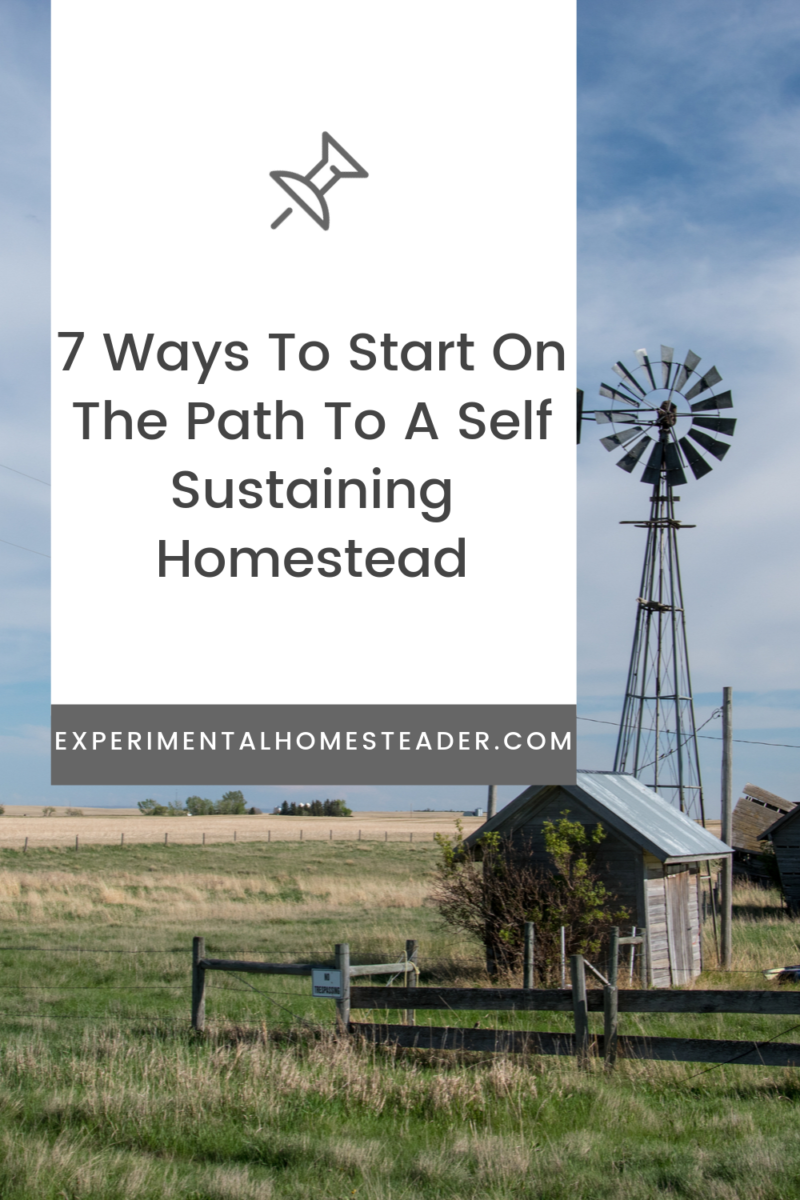

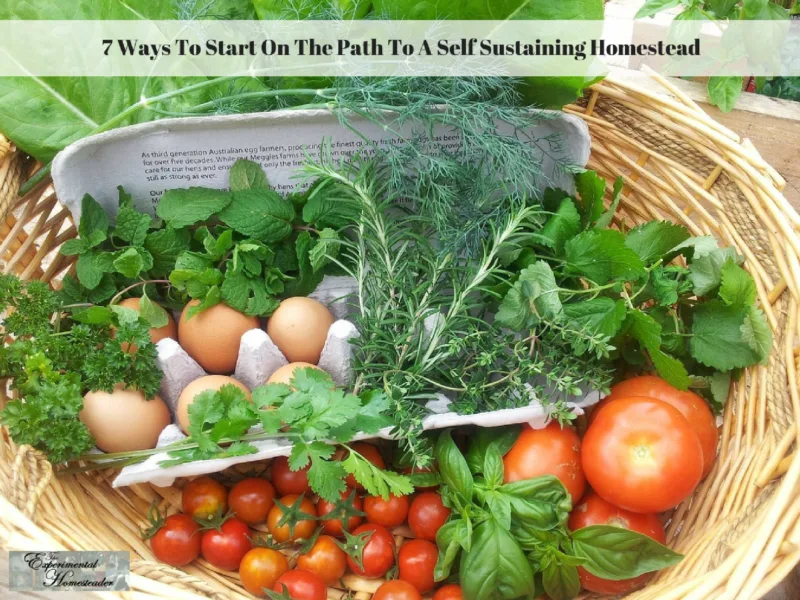




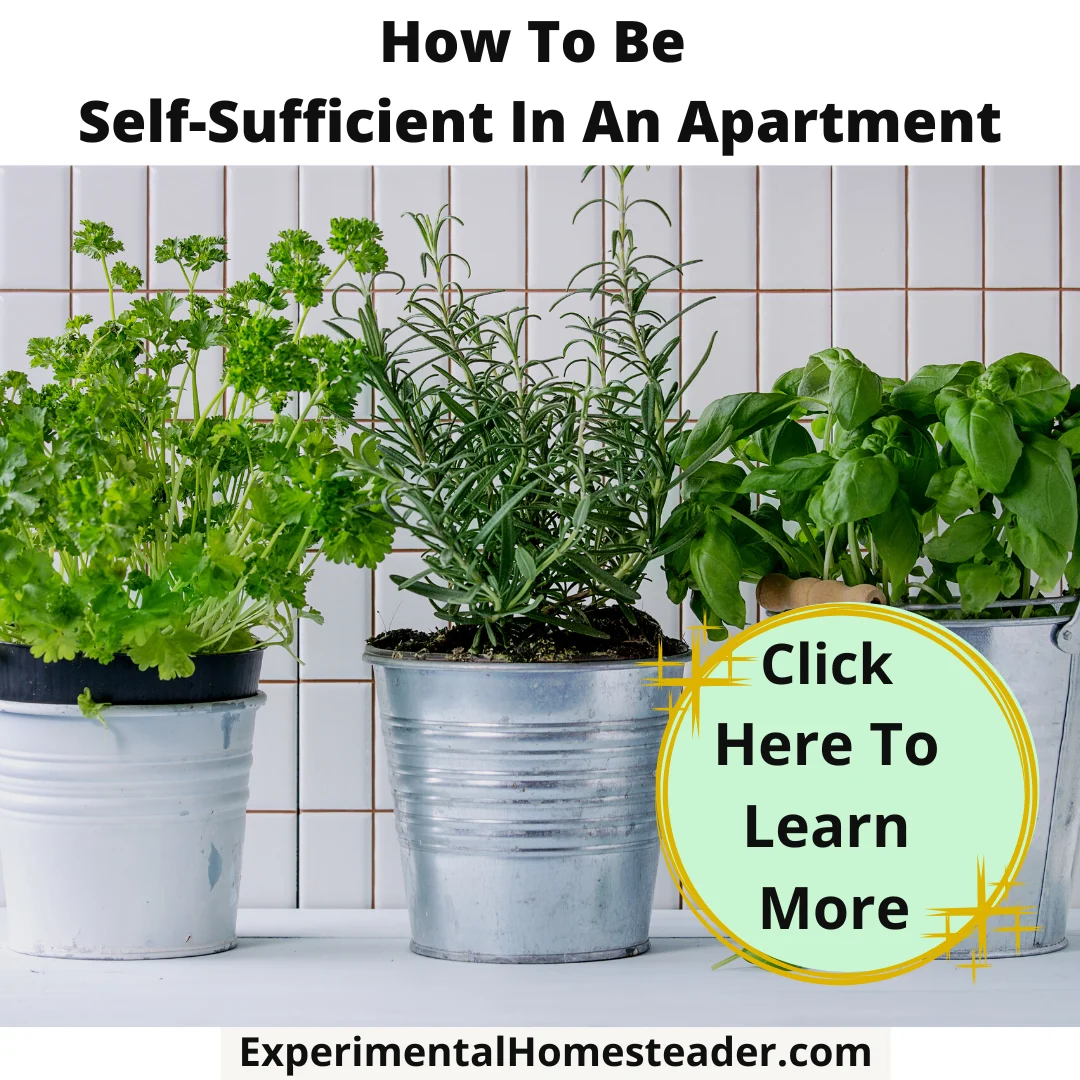
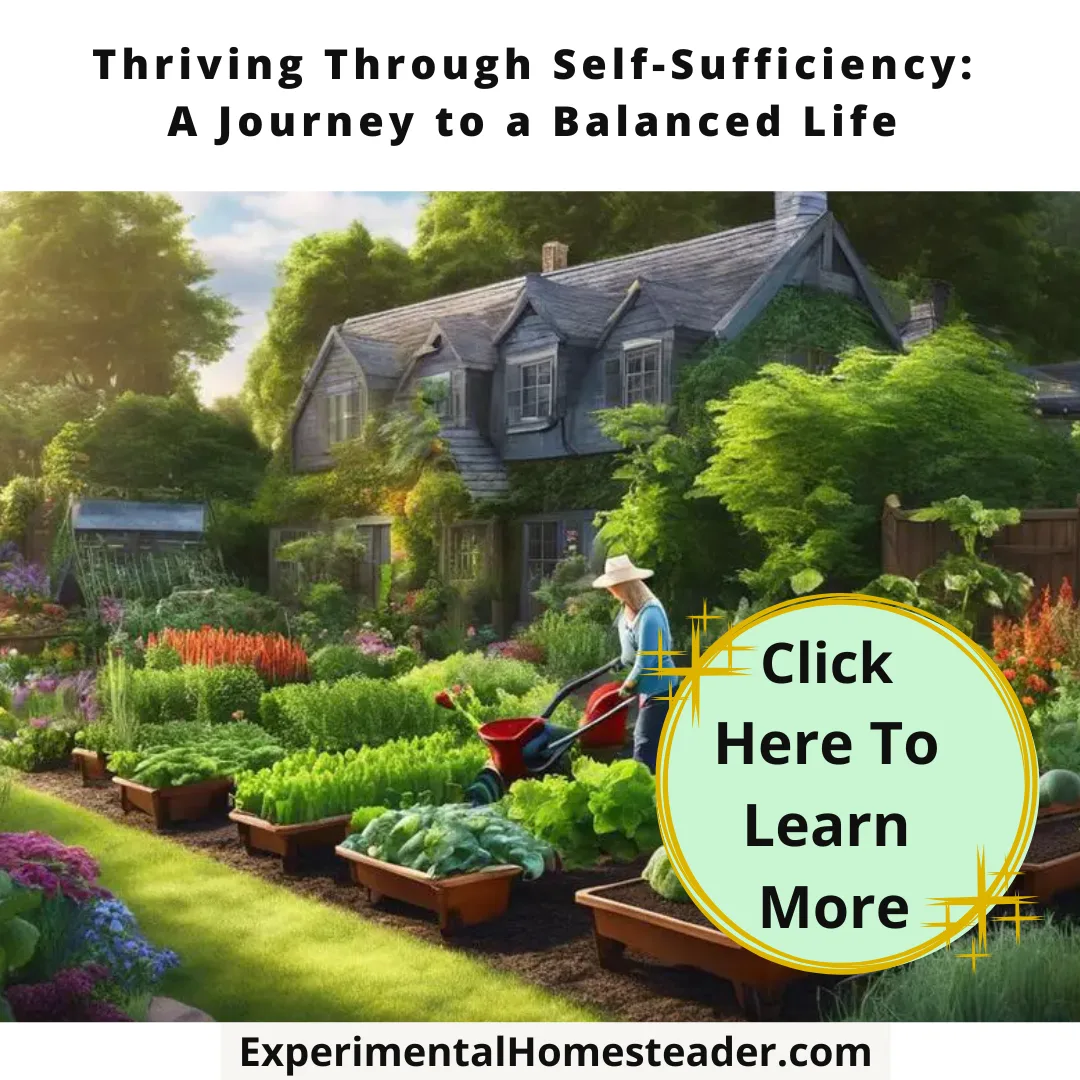
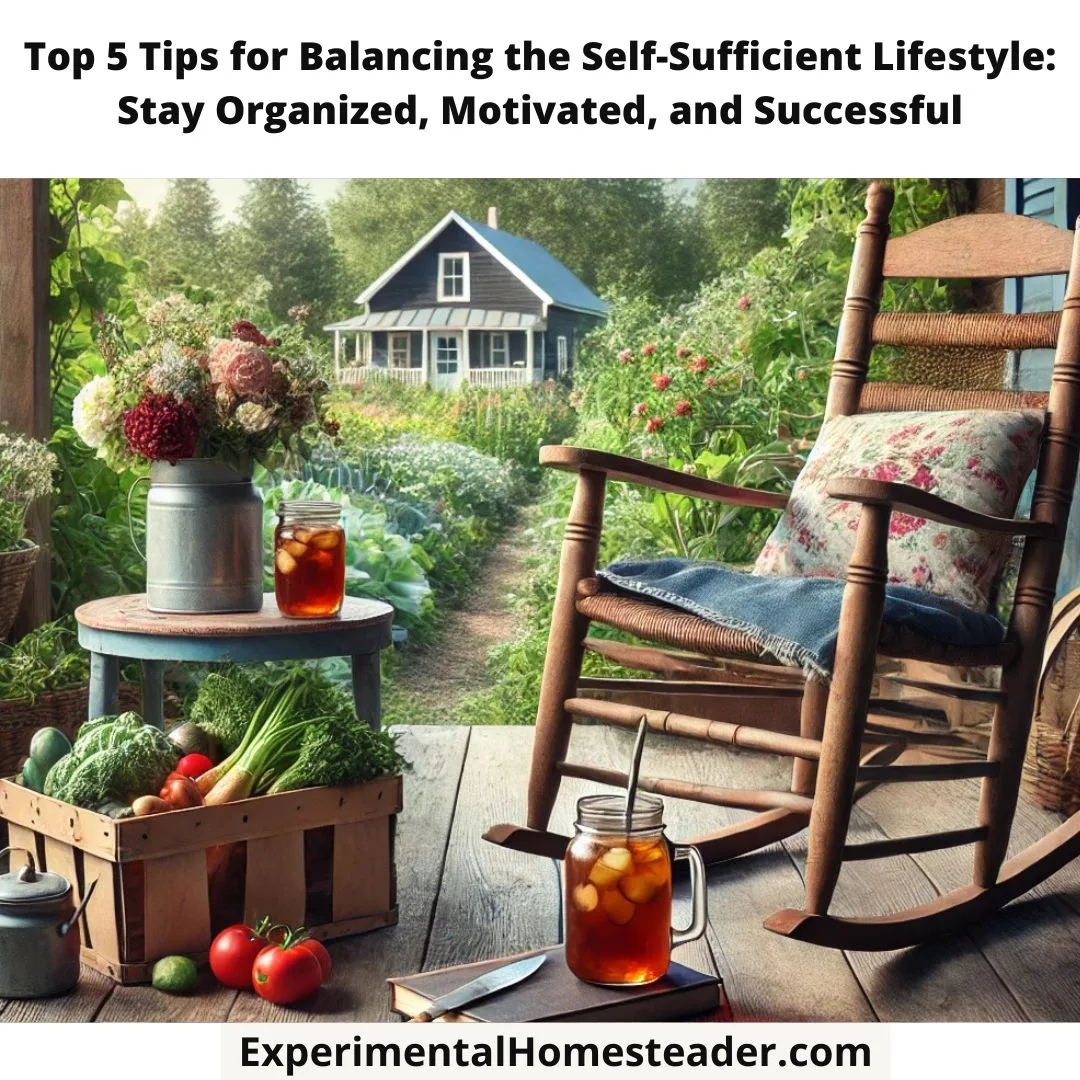

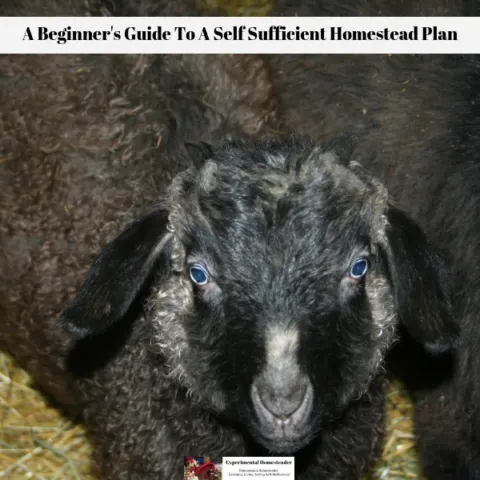

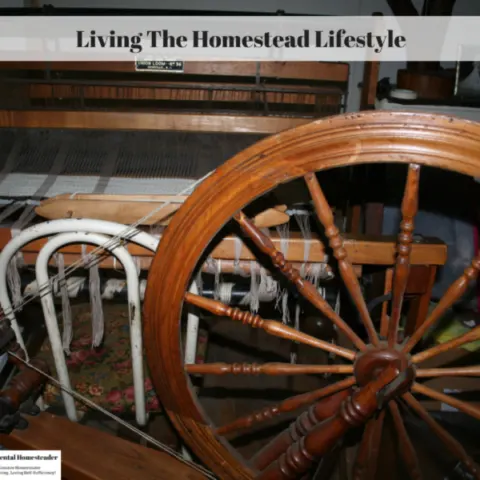

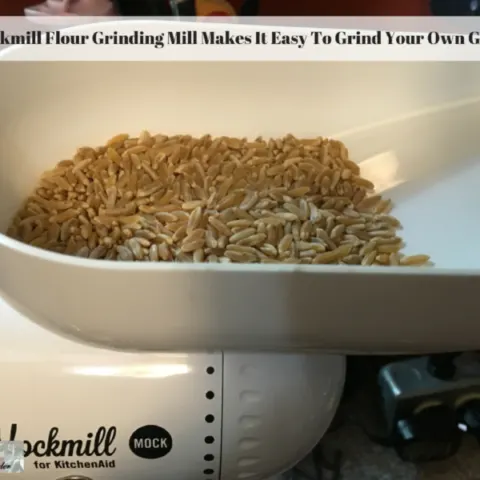
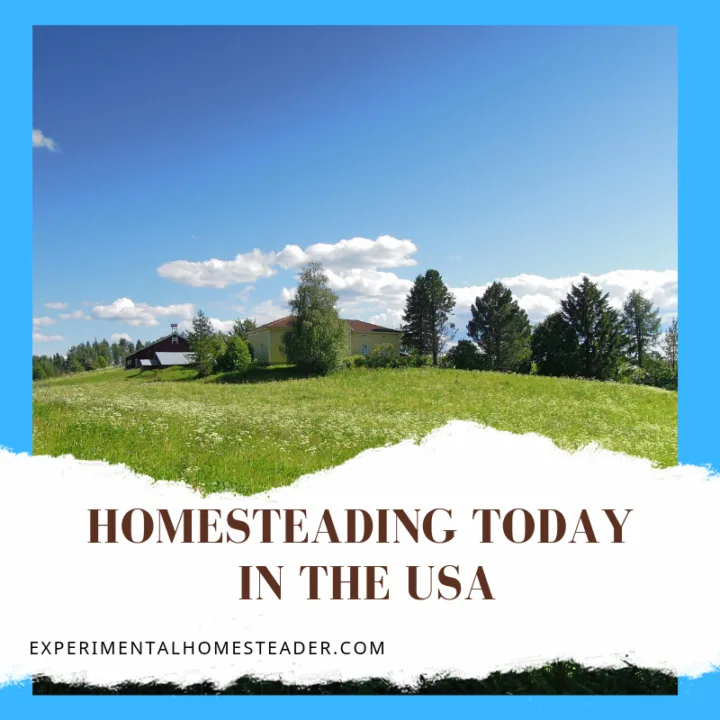

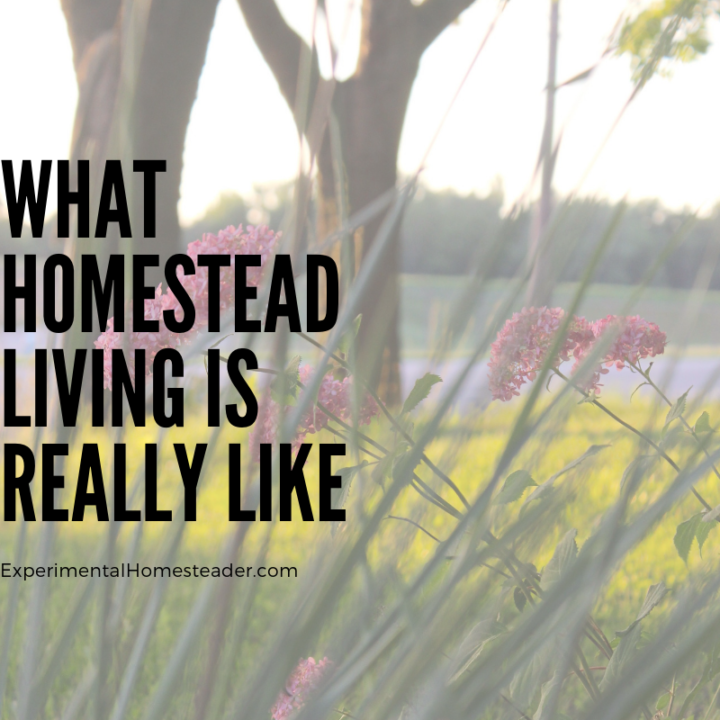
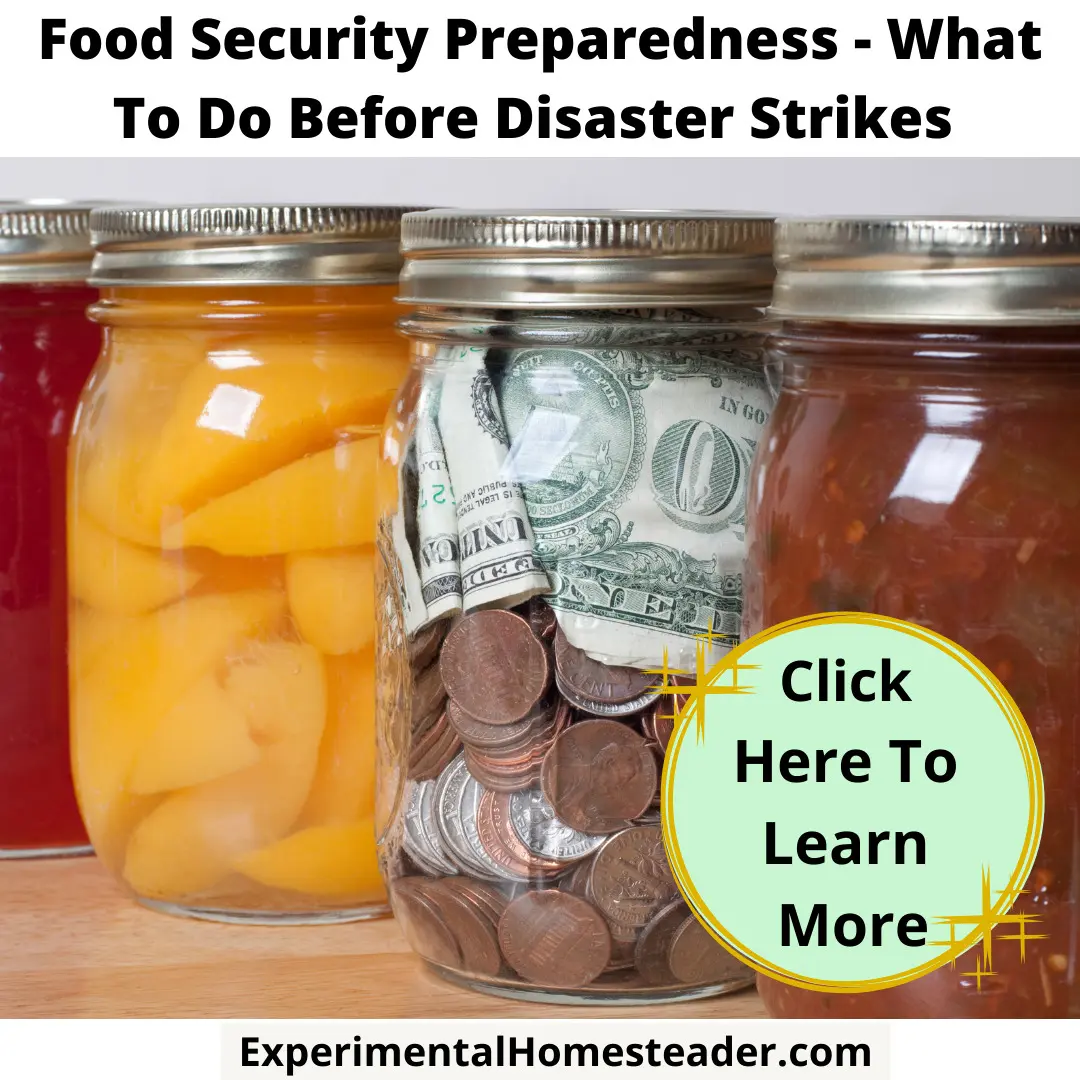
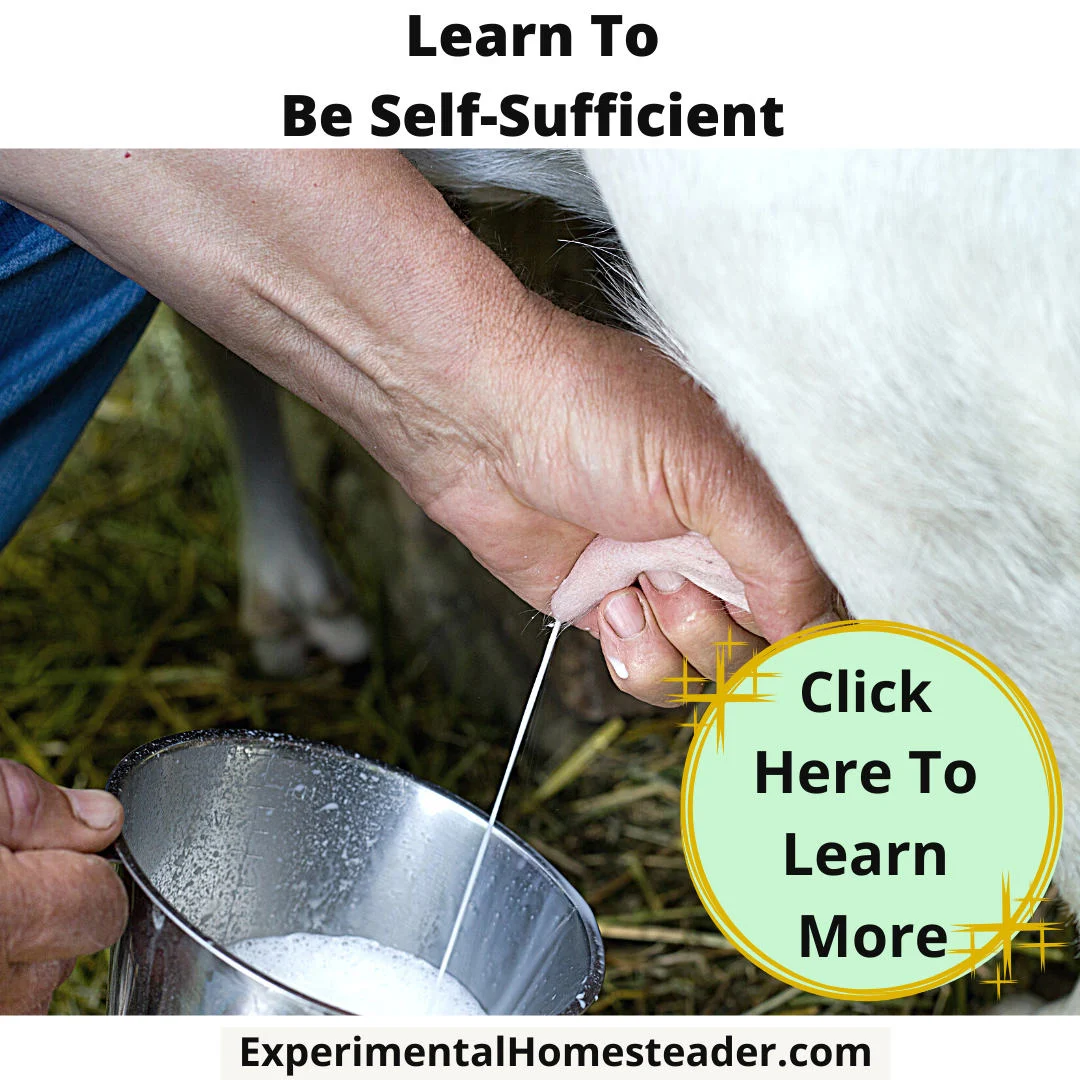
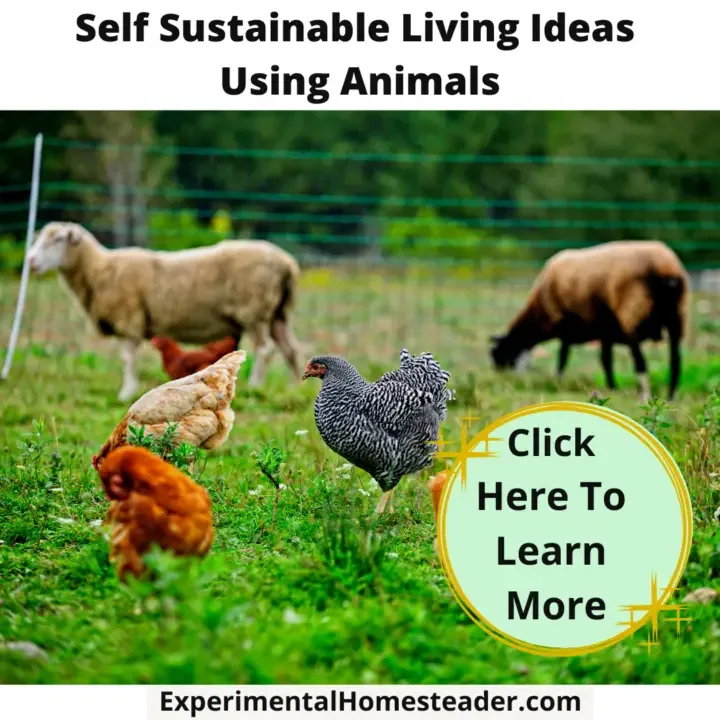
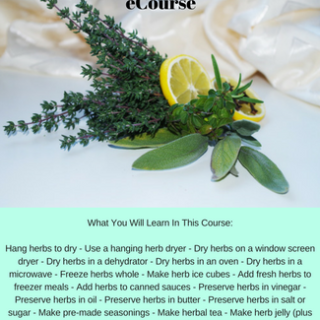



Dianne Hadorn
Monday 25th of February 2019
Sheri,
This is a great post! I enjoyed reading it and man - is it packed with information.
I'm a homesteader myself and always interested in finding links and such for educating myself on how to do things. Thank you for sharing all this.
I've pinned it to go back and jump over to some the links too.
Great information, Dianne
Sheri Ann Richerson
Tuesday 26th of February 2019
Thank you so much!
I am really glad to know that you find this useful!
I hope your homestead is coming along the way you wish.
If you ever have questions about anything, do feel free to reach out!
Have a wonderful day! Sheri Ann
Holly
Wednesday 9th of January 2019
Hi Sheri - What a great article! Thank you so much for including my piece. Pinned! Hugs, Holly
Sheri Ann Richerson
Saturday 12th of January 2019
HI Holly,
Thank you! You are welcome! I am always happy to include links to other blogs that tie in to my articles and help my readers as well. You have some great articles on your site! Thank you for letting me share!
julie
Monday 7th of January 2019
I love the aspect of gleaning. We do that with several of our neighbors, and allow them to do the same on our farm. This is a great post!
Sheri Ann Richerson
Tuesday 8th of January 2019
Thank you! It also keeps food from just laying on the ground going to waste! I am so glad you are doing it and allow others to glean your extras! Another great thing to do with gleaned food is to donate it to a local food pantry or soup kitchen! That way, even if you won't use it, someone gets the benefit of fresh food!
Carol Spierdowis
Thursday 3rd of August 2017
Very nice.
Sheri Ann Richerson
Monday 7th of August 2017
Thank you!